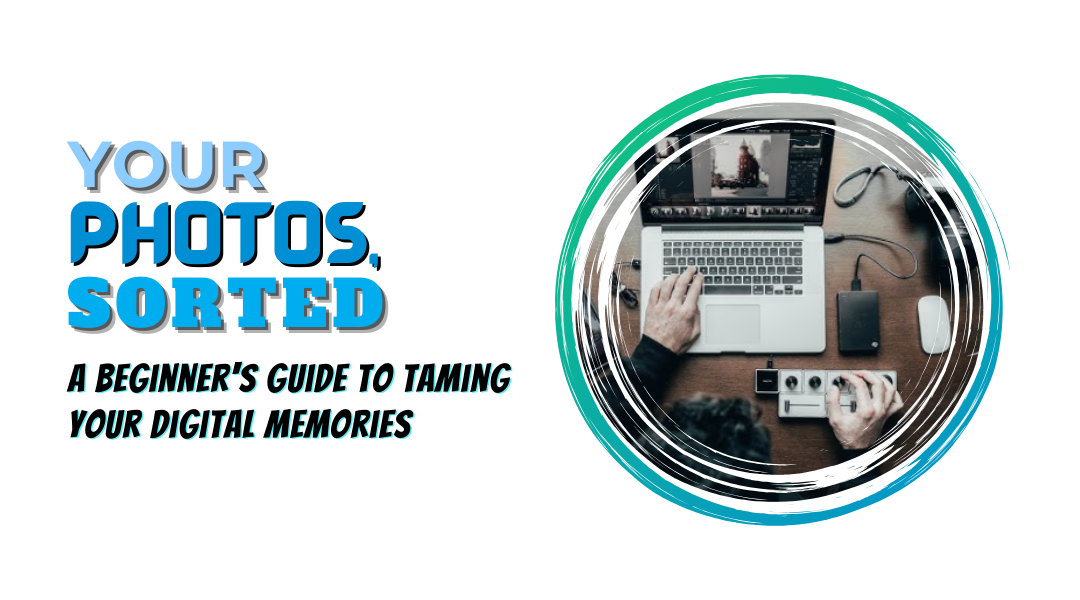Our camera rolls are a mess. A masterpiece of your kid’s first steps is buried between three blurry shots of the floor and 17 screenshots you meant to delete. Finding that one perfect photo feels like an archaeological dig. But what if you could teach your computer to be your personal archivist? To know your life well enough to sort the treasures from the trash? That’s the quiet magic of image recognition, and it’s far more accessible—and personal—than you might think.
This isn’t about complex algorithms; it’s about creating order from chaos. It’s the digital equivalent of finally organizing that box of old photos from your parents’ attic, but instead of sticky notes, you’re using a bit of simple, teachable AI.
How It Actually Works: Teaching Your Computer to See
Think of it like this: you’re training a very eager, very literal intern. You can’t just say “find all the good pictures of grandma.” You have to show them examples.
This process is called supervised learning. You provide the labels, and the model looks for patterns. It doesn’t “understand” what a birthday is; it learns that images containing certain combinations of shapes, colors, and textures—like the flickering of candles on a cake, the curved lines of balloons, and the specific pixels that make up your Uncle Joe’s face—often come with the label “birthday.”
It’s pattern matching on a massive scale. The more good examples you give it, the better it gets. If it mistakes a bright orange sunset for a pumpkin (both are round and orange), you don’t get mad. You just show it more examples of each until it learns the finer distinctions.
Your Project: Build a Personal Photo Sorter
This isn’t a theoretical exercise. In about 15 minutes, you can create a simple model that knows your world.
- The Tool: Google’s Teachable Machine. It’s free, runs right in your web browser, and requires zero coding. It’s designed for exactly this: quick, simple experiments.
- The Setup: Don’t overthink it. Start with two categories that are meaningful to you. Not generic “cat” and “dog,” but “Maya’s Art Projects” and “Garden Progress” or “Weekend Hikes” and “Coffee Shop Reads.” The more personal, the more satisfying the result.
- Gather Your Examples: Raid your phone for 15-20 photos for each category. For “Garden Progress,” include close-ups of buds, wide shots of the bed, and even a picture of your tomato plant looking a little wilted. Variety is key.
- Train and Test: Upload your photos into their respective categories, hit “Train,” and let the tool work for a minute. Then, drag a new, unseen photo into the test area. The thrill of seeing it correctly label a picture of your sunflowers as “Garden Progress” is genuine. If it fails, that’s part of the fun—add a few more examples to the confused category and train again. You’re not debugging code; you’re teaching a student.
Why This Matters Beyond the neatness
This simple act is a gateway to two bigger ideas:
- Demystifying AI: You’re pulling back the curtain. The “magic” of AI is just a lot of math and pattern recognition. By doing it yourself, you replace anxiety with understanding. You see that you’re in control of the teaching process.
- Active Curation: We used to actively curate our memories. We developed film, placed photos in albums, and wrote captions. Now, we just hoard thousands of digital images. This project is a small return to that intentionality. You’re not just storing photos; you’re defining what matters to you and teaching your machine to help you find it.
Taking It a Step Further: From Sorting to Storytelling
Once your model can sort, you can use it to create, not just organize.
- Auto-Generate Photo Essays: Could you train a model to find all “quiet, contemplative moments” from a year’s worth of photos? Or all the images from your favorite local hiking trail? You could then automatically dump those into a folder and use a simple printing service to create a custom annual photo book. The AI does the grueling work of filtering, and you do the joyful work of final selection.
- The Digital Family Recipe Box: Tired of that one stained recipe card? Take photos of your family’s handwritten recipes—Aunt Carol’s messy cursive, your dad’s all-caps printing. Train a model to recognize them. Now you have a searchable, visual database of your culinary heritage. It’s not just text; it’s preserving the handwriting, the smudges, the personality.
Conclusion: Your Life, Beautifully Organized
This isn’t about outsourcing your memory to a machine. It’s about using technology as a partner in preservation. It’s about spending less time scrolling and more time reliving. That feeling of instantly finding the photo you want—the one of your dog sleeping upside-down or your child covered in cake frosting—is a small but real quality-of-life improvement.
The goal here isn’t to become a data scientist. It’s to become a more organized, more intentional curator of your own story. By taking this small, hands-on step, you’re not just sorting photos; you’re reclaiming your digital space and learning a fundamental skill of the future: how to guide AI to work for you, on your terms, for the things you truly care about. So open your camera roll, pick a theme, and start teaching. Your future self, looking for that perfect memory, will thank you.
